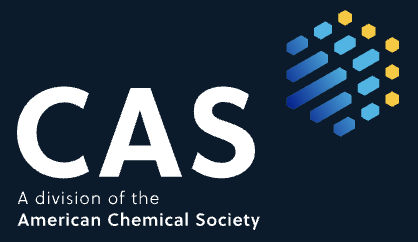The Effects of Birth Weight on the Maternal and Fetal Complications
Hasan Talay1, Alpaslan Akyol2, Atınç Özer3, Erbil Karaman3, Çağdaş Özdemir3, Hasan Cemal Ark31Mardin Women2Firat University, School Of Medicine, Department Of Obstetrics And Gynecology
3Department Of Obstetrics And Gynecology, Kanuni Sultan Süleyman Training And Research Hospital, Istanbul, Turkey
OBJECTIVE: To investigate the effect of birth weight on maternal and fetal complications
METHODS: 274 patients who delivered 2500 – 4000 grams (Group 1) and 246 patients who delivered over 4000 grams (Group 2) were analyzed retrospectively at our hospital between June 2011 and July 2012. Data from both groups were compared with respect to demographic characteristics (age, gravidity, parity, gestational weeks at birth, body mass index (BMI)), mode of delivery, episiotomy requirement, 1 and 5 minute APGAR scores, birth complications, requirement for hospitalization and for neonatal intensive care unit admission, duration of hospitalization.
RESULTS: Group 1 (2500-4000 g.) and Group 2 (>4000 g.) were statistically compared in terms of demographic characteristics, maternal parity (p=0.02) and at a rate of obese (BMI>30kg/m2) patients (p=0.03) showed a significant difference in favor of Group 2. Cesarean section (p = 0.04) and episiotomy requirement ratio (p = 0.008) in favor of Group 2 statistically significant difference was found. There was no statistically significant difference between the two groups in the rate of fetal complications occurring at delivery, while there were significant differences between group 1 and group 2 in the rate of maternal complications occurring at delivery (p=0.02) and total complications occurring at delivery (p=0.003).
CONCLUSION: The requirement for episiotomy, cesarean delivery and maternal complications occurring at delivery was significantly higher in the women with high birth weight (> 4000 g), while there were no significant differences in the rate of fetal complications occurring at delivery, APGAR scores, requirement for hospitalization, and the duration of hospital stay for groups 1 and 2 when birth weight was evaluated.
Bebek Doğum Tartısının Maternal ve Fetal Komplikasyonlara Etkisi
Hasan Talay1, Alpaslan Akyol2, Atınç Özer3, Erbil Karaman3, Çağdaş Özdemir3, Hasan Cemal Ark31Mardin Kadın Doğum Ve Çocuk Hastalıkları Hastanesi2Fırat Üniversitesi Tıp Fakültesi, Kadın Hastalıkları Ve Doğum A.b.d.
3Kanuni Sultan Süleyman Eğitim Araştırma Hastanesi, Kadın Hastalıkları Ve Doğum
AMAÇ: Bebek doğum ağırlığının doğum sürecinde maternal ve fetal komplikasyonlara etkisinin incelenmesidir.
YÖNTEMLER: Hastanemizde Haziran 2011-Temmuz 2012 tarihleri arasında normal doğum tartısı olarak kabul edilen 2500 – 4000 gram arası doğum yapmış 274 olgu (Grup 1) ile 4000 gram üzeri doğum yapmış 246 olgu (Grup 2) dosyası retrospektif olarak incelendi. Oluşturulan bu iki grup demografik özellikler (yaş, gravida, parite, doğumda gebelik haftası, vücut kitle indeksi (VKİ)), doğum şekli, epizyotomi gereksinimi, 1. ve 5. dakika APGAR skoru, doğumda oluşan komplikasyonlar, bebeğin hastaneye yatış gereksinimi, yenidoğan yoğun bakım ünitesi gereksinimi ve hastanede yatış süresi açısından karşılaştırıldı.
BULGULAR: Grup1 (2500-4000 gr.) ve Grup 2(>4000gr.) maternal demografik özellikler açısından karşılaştırıldığında istatistiksel olarak parite sayısının (p=0.02) ve obes hasta (VKİ>30 kg/m2) oranının (p=0.03) Grup 2 lehine anlamlı olduğu görüldü. Yine Grup2 lehine sezaryen (p=0.04) ve epizyotomi gereksinimi oranında (p=0.008) istatistiksel olarak anlamlı bir farklılık bulundu. Doğumda oluşan fetal komplikasyonlarda anlamlı bir farklılık saptanmazken, maternal doğum komplikasyonu (p=0.02) ve toplam doğum komplikasyonu (p=0.003) oranında gruplar arasında istatistiksel anlamlı bir farklılık bulundu.
SONUÇ: Doğum ağırlığının 4000 gramın üzerinde olması epizyotomi gereksiniminde, sezaryen oranlarında ve doğumda oluşan maternal komplikasyonlarda istatistiksel anlamlı bir fark oluştururken, fetal komplikasyonlar, APGAR skorları, bebeğin hastaneye yatış gereksinimini ve kalış süresi açısından istatistiksel bir farklılık oluşturmamıştır.
Manuscript Language: Turkish






















